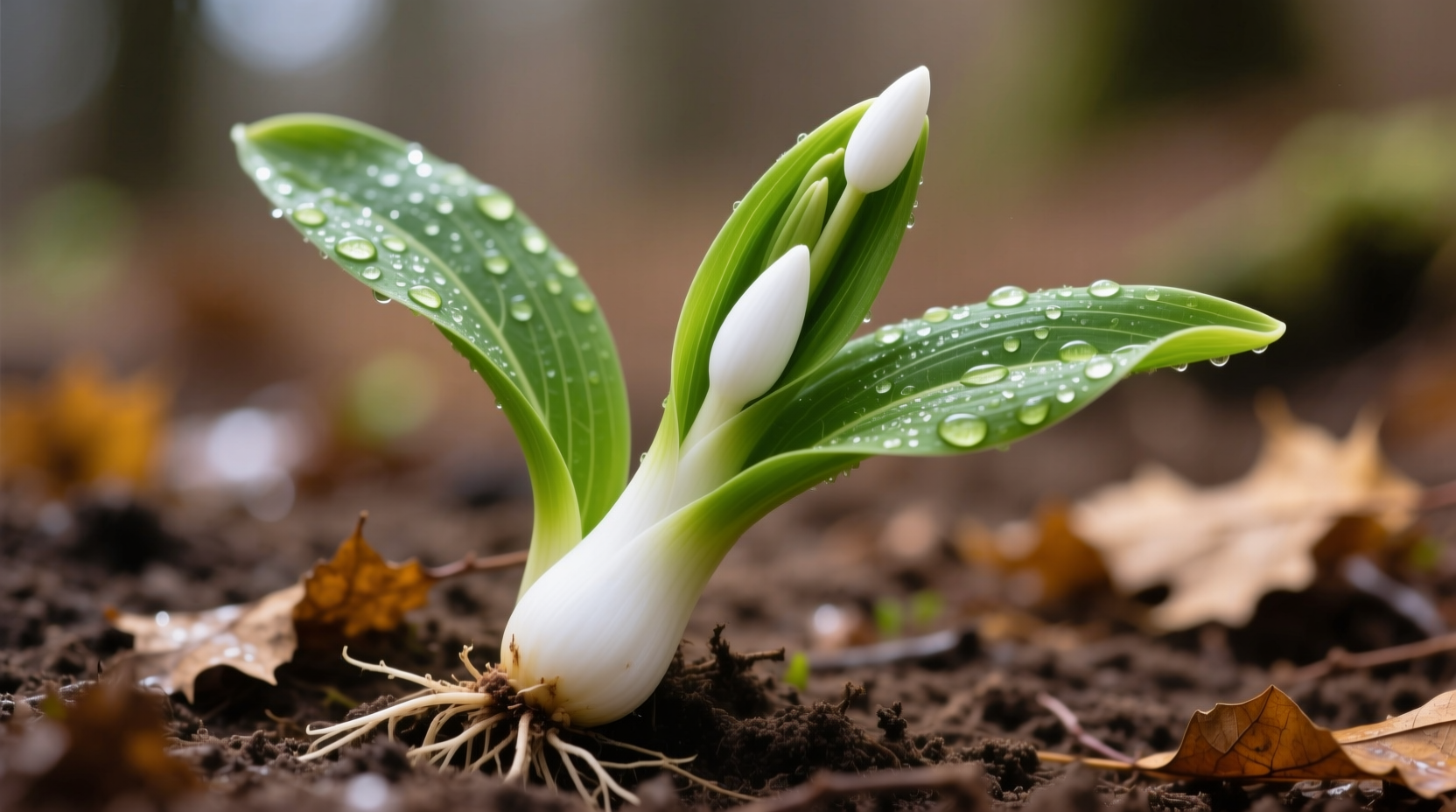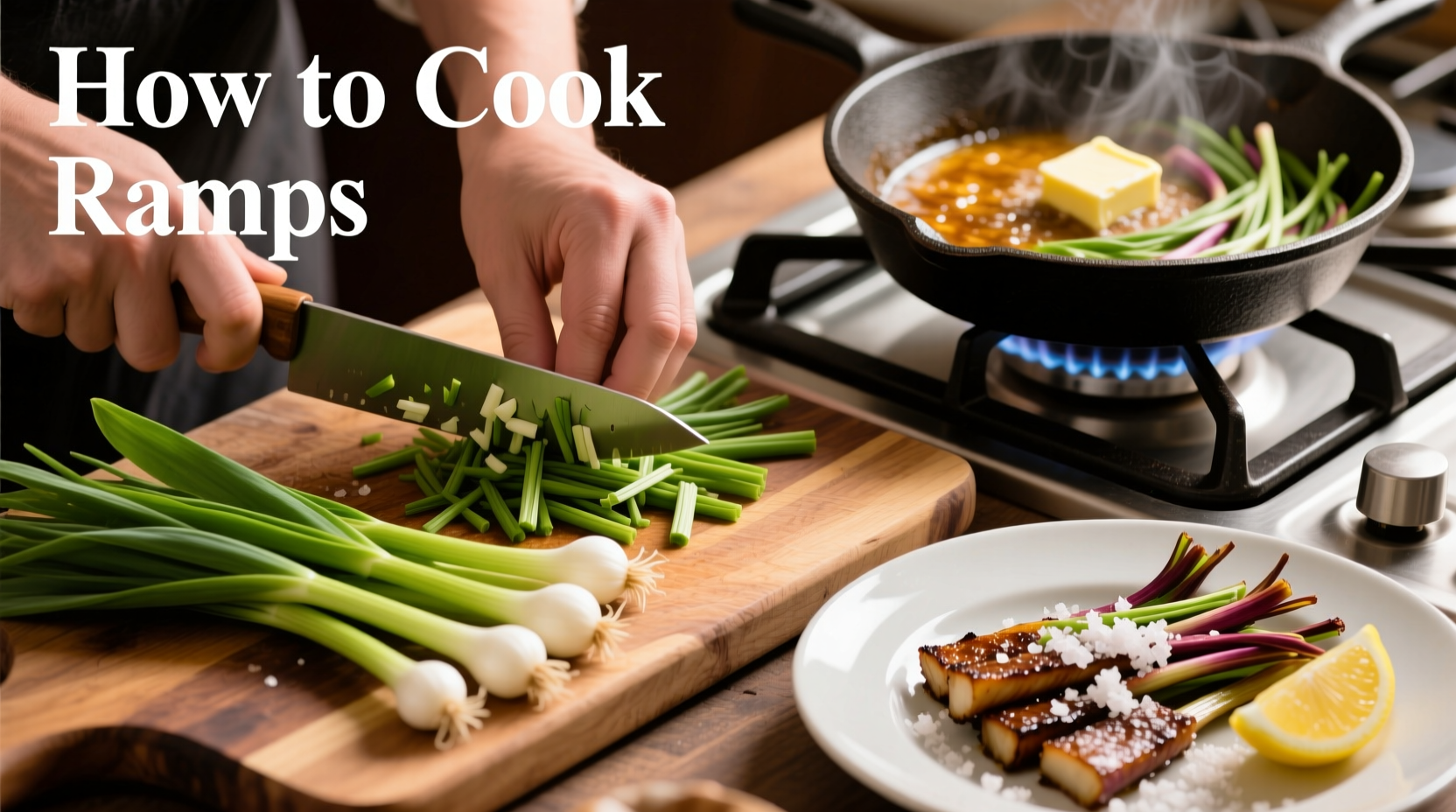Ramps, also known as wild leeks, are a prized spring delicacy with a distinctive flavor that combines the best qualities of garlic and onion. These seasonal treasures grow wild in eastern North American forests and have become increasingly popular among home cooks and professional chefs alike. When handled properly, ramps transform simple dishes into extraordinary culinary experiences.
Understanding Ramps Before You Cook
Before you start cooking, it's essential to understand what makes ramps special. These perennial plants (Allium tricoccum) emerge in early spring and have a short harvesting season, typically from April to early May. The entire plant is edible—white bulb, purple-streaked stem, and broad green leaves—each part offering slightly different flavor intensities.
| Ramp Component | Flavor Profile | Best Cooking Methods |
|---|---|---|
| White Bulb | Strongest garlic-onion flavor | Sautéing, roasting, pickling |
| Purple Stem | Moderate intensity, slightly fibrous | Sautéing, grilling, adding to stocks |
| Green Leaves | Milder, more vegetal flavor | Finishing raw, quick wilting, pesto |
Preparing Ramps for Cooking
Proper preparation ensures you maximize flavor while maintaining texture. Start by trimming any roots from the bulbs and removing any wilted or damaged leaves. Gently rinse the ramps under cool running water, paying special attention to the spaces between the white bulb layers where soil often hides. Shake off excess water but don't dry completely—some moisture helps with sautéing.
For most recipes, separate the white and green parts as they cook at different rates. The white bulbs require slightly longer cooking to become tender, while the green leaves wilt quickly. This separation technique prevents overcooking the delicate greens while ensuring the bulbs reach perfect tenderness.

Essential Cooking Techniques for Perfect Ramps
Simple Sautéed Ramps (3-5 Minutes)
This fundamental technique works for both beginner and experienced cooks. Heat 1-2 tablespoons of butter or olive oil in a skillet over medium heat. Add the white bulb portions first and cook for 2 minutes, then add the green leaves and continue cooking for another 2-3 minutes until tender but still vibrant. Season with sea salt to taste. The key is not to overcook—ramps should remain slightly crisp, not mushy.
Grilled Ramps for Smoky Flavor
Grilling brings out a wonderful caramelized sweetness. Toss whole ramps with olive oil, salt, and freshly ground black pepper. Place directly on a preheated grill (medium heat) for 3-4 minutes per side until grill marks appear and the bulbs are tender when pierced with a fork. For best results, use a grill basket to prevent smaller pieces from falling through the grates.
Pickled Ramps for Year-Round Enjoyment
Pickling preserves ramps' unique flavor for months. Combine equal parts vinegar and water with 1 tablespoon sugar and 1 teaspoon salt per cup of liquid. Bring to a boil, then pour over tightly packed ramps in sterilized jars. Add optional flavor enhancers like mustard seeds or red pepper flakes. Seal and refrigerate for at least 2 weeks before eating. According to agricultural research from Cornell University's College of Agriculture and Life Sciences, properly pickled ramps maintain their distinctive flavor profile for up to 12 months when stored correctly (cals.cornell.edu).
Delicious Ways to Incorporate Ramps Into Your Cooking
Ramp and Egg Dishes
Combine sautéed ramps with scrambled eggs or frittatas for a spring brunch favorite. Add the green leaves during the last minute of cooking to preserve their bright color and delicate flavor. The USDA Dietary Guidelines for Americans notes that adding vegetables like ramps to egg dishes increases nutritional value while enhancing flavor without additional sodium (dietaryguidelines.gov).
Ramp Pasta Perfection
Create a simple yet elegant pasta sauce by blending sautéed ramps with olive oil, Parmesan cheese, and a splash of pasta water. Toss with freshly cooked pasta (spaghetti or fettuccine work well) and finish with reserved ramp greens. This technique follows traditional Italian preparation methods for seasonal alliums documented by culinary historians at the Oxford Symposium on Food and Cookery.
Sustainable Harvesting and Seasonal Considerations
Ramps grow slowly and can take up to seven years to mature from seed, making sustainable harvesting practices essential. Many states including Tennessee and North Carolina have implemented regulations to protect wild ramp populations. When foraging, take only one leaf per plant or harvest no more than 10% of a patch to ensure future growth. The Great Smoky Mountains National Park provides detailed guidelines for responsible ramp harvesting on their official website (nps.gov/grsm).
Storing Fresh Ramps
For optimal freshness, store unwashed ramps in a loosely closed plastic bag with a damp paper towel in your refrigerator's crisper drawer. Properly stored, they'll maintain quality for 3-5 days. Don't wash ramps until ready to use, as excess moisture accelerates spoilage. For longer storage, freeze chopped ramps in olive oil using ice cube trays—a technique recommended by food preservation experts at the National Center for Home Food Preservation.
Frequently Asked Questions
Can you eat the entire ramp plant?
Yes, all parts of the ramp are edible. The white bulb has the strongest flavor, the purple stem offers moderate intensity, and the green leaves provide a milder taste. Different parts work best in different cooking applications—bulbs for longer cooking, greens for finishing.
How do you prevent ramps from becoming bitter when cooking?
To prevent bitterness, avoid overcooking ramps. Cook them just until tender—typically 3-5 minutes for sautéing. The green leaves should be added in the last minute of cooking. Never cook ramps at high heat for extended periods, as this brings out unpleasant bitter compounds.
What are good substitutes for ramps if I can't find them?
The closest substitutes are a combination of scallions and garlic. Use 2 parts scallion (white and green) with 1 part minced garlic to approximate ramp flavor. For the best results, add the garlic toward the end of cooking to prevent overpowering the dish.
How can I tell if ramps have gone bad?
Fresh ramps should be firm with vibrant green leaves and crisp white bulbs. Signs of spoilage include yellowing leaves, slimy texture, mushy bulbs, or an off smell. Properly stored ramps typically remain fresh for 3-5 days in the refrigerator.











 浙公网安备
33010002000092号
浙公网安备
33010002000092号 浙B2-20120091-4
浙B2-20120091-4